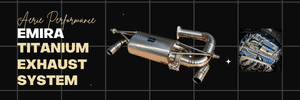Well I'm not sure what your current car is, so it's hard to make a comparison.
But yes, if you lower the redline of your car without making any other changes, you'd make a lower numeric hp number (on a spec sheet) but the car would drive exactly the same as you are used to at all of the normal rev ranges that you use when driving.
I get the question though. If the car makes less torque at a given RPM than the Emira does at the same rpm, then which is faster? Well, you still have to do some calculations on gear ratio and tire diameter to figure out the effective ratio between the engine and the wheels. This ratio acts as a torque multiplier. And you also need to compare the vehicle weight and calculate that as well, to figure out accelerative potential of the vehicle at any given rpm (assuming max throttle).
But with a car that revs as high as the one you have currently, it doesn't make sense to compare output directly by RPM. Maybe instead it's appropriate to plot the difference by percentage of total available rev band, from idle to redline? Or overlay the torque curves from equivalent dyno plots. The shape of the area under the torque curve is what generates most of the sensation of speed and response for the driver. Difficult to come by that data without both vehicles in hand, though, and cars with dramatically different torque curve shapes result in different strategies for driving quickly.
To throw even more complication in, the maximum throttle figures used for dyno plots don't tell you much about how the car feels at partial throttle, which is where most of us do our driving on the road. The way a car feels is often as much about the part-throttle response as it is full throttle output. So that's a consideration as well.









